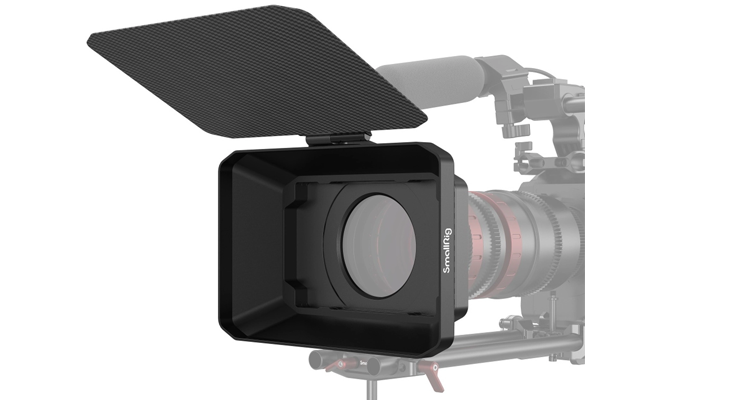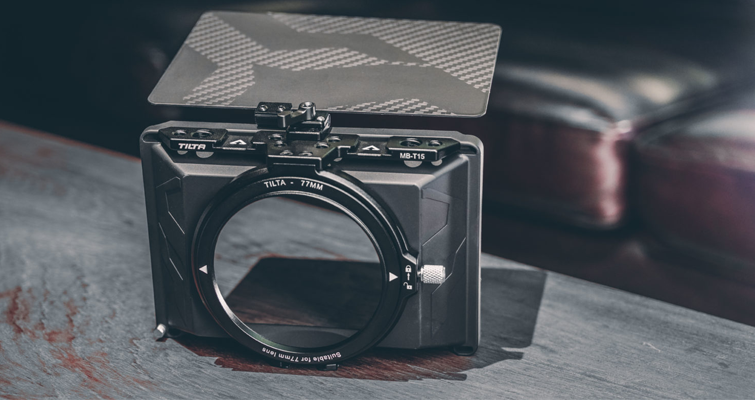
4 Reasons Why You Need a Matte Box for Your Next Shoot
Let’s take a look at four reasons why you need, and can effectively use, a matte box on your camera during your next production.
I remember my first matte box. I purchased it cheap on eBay. When it arrived, I quickly slapped it in front of whatever lens I had at the time. When I took a step back to admire my creation, I realized that the matte box was too big for the lens and was a poor fit. As a result, it left a large circular gap between the two. What did I do about it? Nothing. I just rolled with it because it made my camera look cool.
However, matte boxes are fantastic filmmaking tools that do more than improve the look of your camera. They can help you craft better, more distinct, more stylized imagery.
What Is a Matte Box?
A matte box is an accessory designed to control and work with the light that’s coming into your lens. This is done by the hood and the barn doors or “French flags” on the side of the box that can cut or reduce lens flares or distortions in your shots.
A matte box also uses a drop-in-like filter component to add filters easily without screwing them to the front of your lens (which is extremely time efficient.) As for attaching a matte box, you usually get two options: a rod system or screwed onto the front of the lens.
1. Filtration
Filtration is typically the biggest reason why someone uses a matte box. Filtration can be anything from neutral density (ND) to specialized filtration—like black pro-mist, pearlescent, etc.
Filtration shapes your image, and the matte box keeps it all neatly in place in front of the lens.

Matte boxes come with a variety of filtration trays and stages. You can get a single-stage (which fits one filter) all the way up to a triple-stage matte box (which supports up to three filters).
There are even new manufacturers—like PolarPro—that are making proprietary matte box and filtration systems. These systems make the idea and concept of matte boxes more practical, affordable, and accessible to the masses.
If you need to see why filtration is so important to get those cinematic-looking shots, then check out this video by Threefold on How to get that Cinematic Look with Matte Box Filters using a range of different filters by Tokina.
2. Block Unwanted Light
Matte boxes are excellent at blocking stray or unwanted light in your image. As a result, this helps your camera maintain optimal contrast across the image and provides you with maximum control over the light hitting your lens.
For example, if you’re filming in direct sun, you can adjust the matte box’s flags to restrict the volume of stray light that negatively affects your image’s contrast and overall quality.

By using the top, bottom, or side flags of your matte box, you can easily control the amount of light spilling onto your lens. It can be extremely difficult to get consistent results throughout a shot without a matte box.
The ability to block light from a specific part of your frame isn’t possible with screw-on filters—yes, matte boxes are an additional cost to your gear purchase—but having the ability to block a section of light entirely and having to bring additional equipment such as scrims or flags to block or control light is a big reason why matte boxes are well-loved by cinematographers.
3. Safety
Your camera (and its lens) are inherently safer when there’s a matte box in place. If the camera falls off a tripod or gets pinned up against a wall, matte boxes become the first point of contact instead of a costly lens.
Replacing a cracked matte box is far more palatable than replacing a cracked lens. While this shouldn’t be a feature you have to take advantage of often, it’s nice to know that your equipment is a bit more protected.

There are multiple brands out there offering different features and materials, from SmallRig to Tilta. Prices can start as little as $80 and go into the $400+ range.
If you’re just starting off using a matte box and need those key features while not breaking the bank, and giving you some future-proofing, the SmallRig Matte Box 2660—at only $99—is a good recommendation!
Check out this review that Of Two Lands did of the product.
4. Let’s Be Honest, They Look Cool
We can’t avoid the fact that matte boxes just look cool. If you’ve ever been to a film set or a television studio, you’ve seen them attached to every camera. They can instantly elevate the appearance of any camera package. They make it look like your camera is worth way more than it cost.
This is the exact and sole reason I bought my first one. However, since then, I’ve learned that they’re a lot more than just cool.

Now, will you get hired just for having a cooler-looking camera? Eh, probably not. But, you’ll likely get hired for having a matte box and using its features to create better images.
Matte boxes are powerful filmmaking tools. But, don’t go buy a matte box and instantly think it’ll make your footage better.
Learn how to use it within harsh lighting situations, get used to the extra size on the front of your camera, and experiment with filters. And, ultimately, use a matte box as something more than just a visually appealing accessory to get you more clients.
Here are a few more gear articles for you:
- The Best Camera for a New Content Creator
- Canon Announces EOS R7 and EOS R10 – Compact APS-C Cameras
- 5 Documentary-Style Lenses for 5 Different Budgets
- Affordable Field Recorders for Filmmakers
- 5 Tutorials You Need for Making a DIY Film Cart
Cover image via Grusho Anna.





